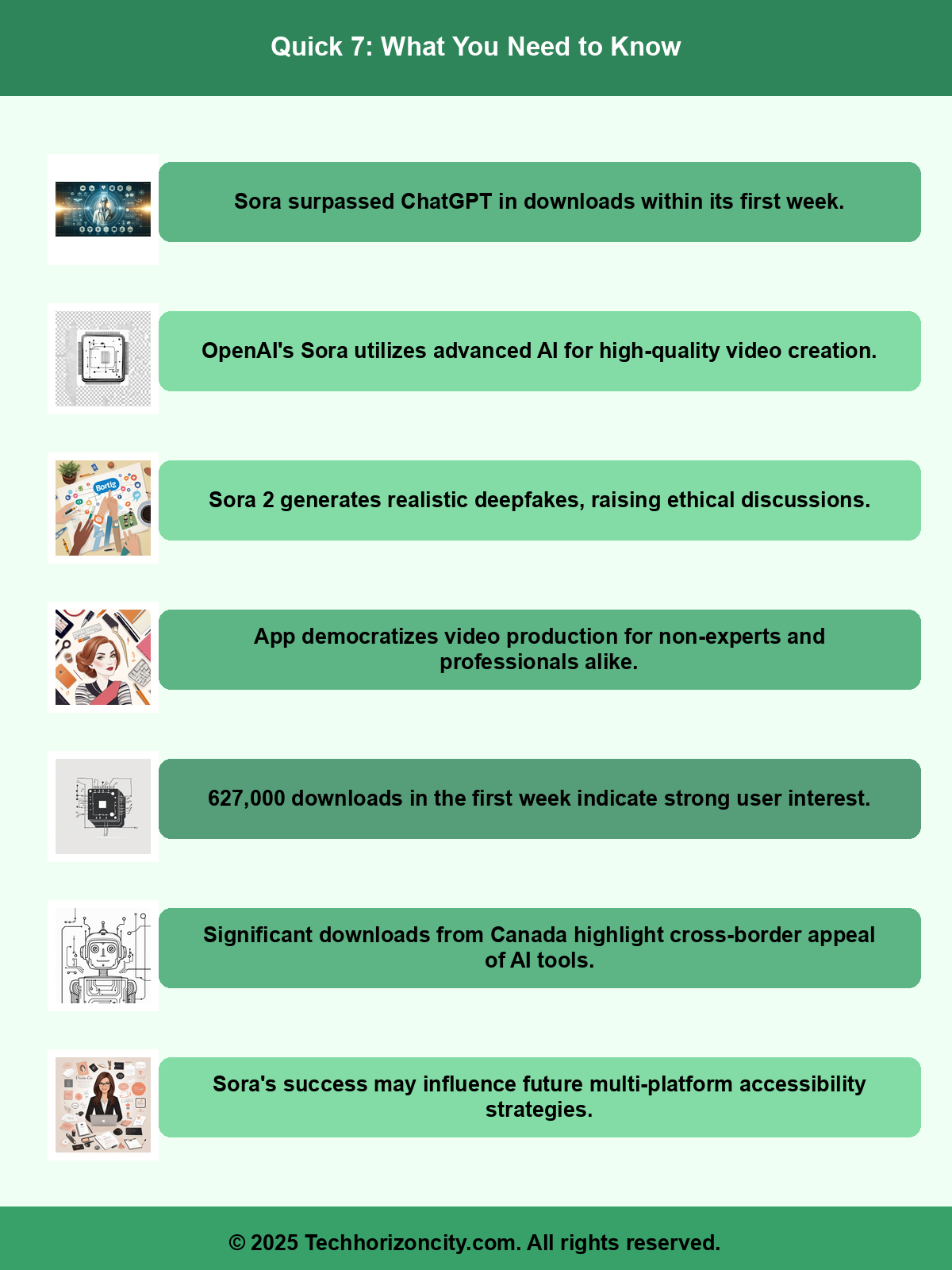Executive Summary
OpenAI’s latest video-generating application, Sora, has made a remarkable entrance into the tech landscape, achieving significant milestones that have captured the attention of both users and industry analysts. In its inaugural week, Sora surpassed the download numbers of ChatGPT, a feat that not only speaks to the app’s immediate popularity but also indicates a growing demand for sophisticated AI tools in creative industries. This article delves into the backdrop of Sora’s launch, its implications for the future of video generation technology, and the broader impact on the digital landscape.

Background Context
In recent years, the emergence of artificial intelligence has transformed numerous sectors, particularly content creation. OpenAI has been at the forefront of this revolution, with tools like ChatGPT redefining how users interact with technology. With the introduction of Sora, which leverages advanced AI capabilities to create high-quality video content, OpenAI is poised to redefine video generation.
For technical resources and innovative solutions, please visit EchoesOfCreationUS for specialized technical resources.
Sora’s early success can be attributed to its innovative video model, Sora 2, which has gained attention for its ability to generate realistic deepfakes. This technology has raised eyebrows and sparked discussions about ethics and authenticity in video content. Launched initially in an invite-only format, Sora achieved an impressive 1 million downloads in less than five days, showcasing a robust interest from users eager to explore AI’s potential in video creation.
Analysis of Implications
The early success of Sora raises several key implications for both users and the industry. First, it signifies a shifting landscape in how individuals and businesses perceive and utilize video content. As platforms evolve to incorporate AI capabilities, the quality and accessibility of video content will likely improve, allowing even those without traditional video production skills to create professional-grade material.
Discover exclusive offers and premium content at Active Living Offers – your gateway to enhanced productivity and lifestyle solutions.
Moreover, Sora’s rapid ascent challenges the notion of what constitutes a successful app launch. By achieving 627,000 downloads in its first week, surpassing ChatGPT’s previous record, Sora highlights a growing appetite for tools that enhance creativity through AI. The fact that Canada contributed a significant portion of these downloads demonstrates the app’s cross-border appeal, suggesting that the demand for sophisticated AI tools is not limited to U.S. markets.
While Sora currently exists in an iOS-only environment, the app’s performance could influence future development strategies for OpenAI and similar companies. The push toward wider accessibility for all platforms is likely to follow if initial user feedback and engagement remain strong.
Industry Impact Assessment
The success of Sora is indicative of a larger trend where AI-driven applications are beginning to dominate the creative tech landscape. Its use of the Sora 2 video model epitomizes the blending of innovation and user engagement, showcasing how AI can enhance creative processes rather than replace them. The implications for the broader content creation industry are profound. As more users begin to adopt AI tools for video generation, traditional barriers to entry in video production will diminish, potentially leading to an explosion of content across platforms.
Furthermore, Sora’s performance may prompt competitors to innovate rapidly in the AI video space. Companies in this sector will need to rethink their strategies to remain relevant, as user expectations will rise with the introduction of sophisticated tools like Sora. The race for advanced video generation technology is on, and those who can harness the power of AI effectively will lead the charge.
Future Outlook
Looking ahead, the trajectory of Sora and similar applications will likely drive the evolution of content creation. As we witness the proliferation of AI tools, we can anticipate a few trends. First, the demand for quality video content will continue to surge, leading to a broader acceptance of AI-generated media. This could result in the democratization of video production, where hobbyists and professionals alike leverage AI to tell their stories.
Second, ethical concerns surrounding deepfakes and AI’s role in media will become more pronounced. As Sora and others push the boundaries of what’s possible, discussions around content integrity, authenticity, and the potential for misuse will necessitate a balanced approach between innovation and regulation.
Lastly, the continued growth of applications like Sora could lead to a paradigm shift where traditional roles in content creation evolve. Creatives may increasingly take on roles as curators and facilitators, guiding AI technologies to enhance their creative visions rather than executing every step of production.
Conclusion with Key Takeaways
OpenAI’s Sora has made an impressive debut in the competitive landscape of video generation, setting benchmarks that could redefine user engagement and content creation. With its rapid download rates and innovative technology, Sora not only surpasses its predecessor, ChatGPT, but also positions itself as a game-changer in the industry. As the demand for AI-driven creative tools continues to grow, Sora’s impact will likely echo through the video production landscape, prompting both excitement and scrutiny.
The key takeaways include:
- Sora’s rapid success indicates a shift in user expectations for video content creation tools.
- As AI tools become more mainstream, traditional barriers to content creation will likely dissolve.
- Ethical considerations around AI-generated media will require ongoing dialogue and regulation.
- The future of video content creation will increasingly blend human creativity with AI capabilities.
As we continue to explore these developments, one thing is clear: the intersection of AI and creativity will pave the way for a new era of storytelling.
Disclaimer: This article was independently created based on publicly available information and industry analysis.
